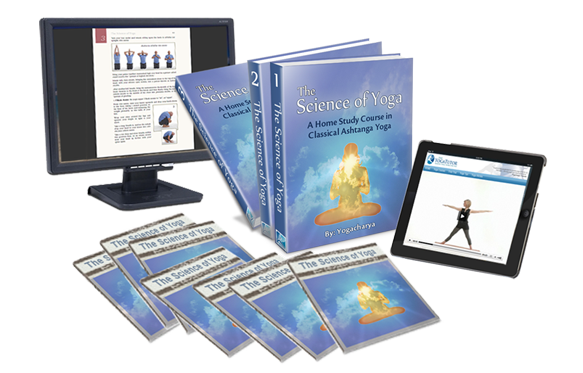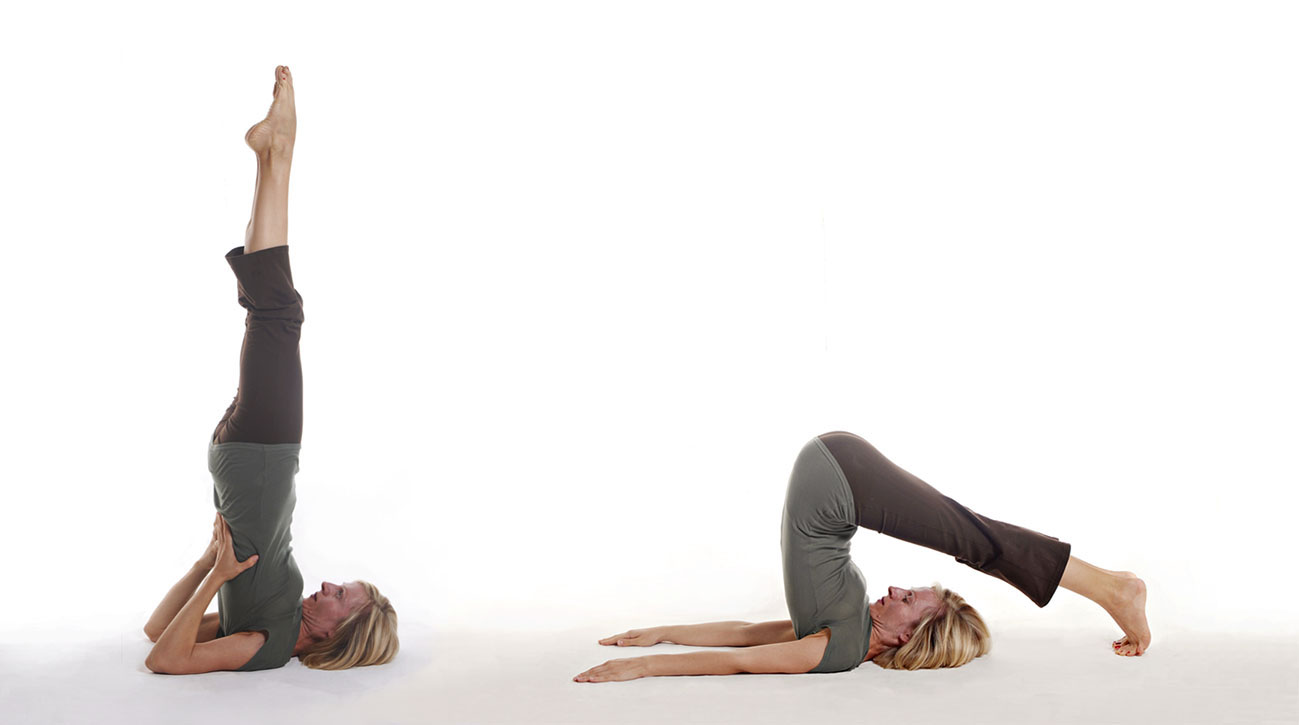[ Excerpt from The Science of Yoga, page 541 ]
In the Sanskrit language, hala means "plough." Therefore, this asana is called "the plough pose."
This position, as with the sarvanga asana, stimulates the thyroid gland, however the extra pressure exerted into the throat region in this posture has a particularly greater stimulating effect upon the parathyroids, which are located deeper within the thyroids on either side of the throat.
Technique
- There are a couple of ways to enter into the hala asana. I teach students to move into the position by first attaining the sarvanga asana, as this provides a very systematic approach which allows for awareness and firm control going into the movement. One can also move directly into the plough position from shava asana, but remember to move in a slow and controlled manner.
- Begin in shava asana.
- Perform all of the movements necessary to attain the sarvanga asana described in the previous lesson.
- From the sarvanga asana, draw the legs overtop of the head and slowly lower the feet down towards the floor.
Note: do not bend the knees, rather keep the legs absolutely straight.
- The classical hala asana is attained by lowering the toes right down to the floor.
- If one is unable to attain this position without bending the knees, or if flexibility is insufficient, then the sapurna hala asana can be practiced first by simply holding the legs in a position that is parallel with the floor, with the toes held 6 to 8 inches above the floor (not shown).
Note: Once in position, the spine should be made vertical and the legs kept perfectly straight. It is very important to relax all the unnecessary muscles, but also to remain strictly still as well. The balls of the feet should be in firm contact with the floor.
- Hold the pose for 10 to 20 seconds in the beginning, working up to 1 minute or more with practice.
- Come out of the posture in the same controlled manner, first moving back up into the sarvanga asana, and then returning to shava asana in the usual step-by-step fashion from the shoulder-stand.
Effects and Benefits
According to the teachings of yoga, good health, youthfulness, longevity and the absence of disease all depend on the suppleness, resilience and good health of the spine. This asana acts directly upon the spine, helping it to regain its health, strength, softness and elasticity, and preventing the vertebrae from degeneration and premature ossification. Coupled with the stimulation to the thyroid and parathyroid glands, this posture is another boon to youthfulness and longevity.
Hala asana helps combat different forms of myalgia, lumbago, neuralgia, shoulder and back stiffness and vertebral mal-alignments. It positively influences the whole autonomic nervous activity through its influence on the sympathetic ganglions along the spine.
In performing hala asana, the muscles in the back are successively contracted, relaxed and then stretched, which has a positive effect on blood circulation through the trunk. The dynamic (contracting) phase of hala asana, or the action of moving into the pose, strengthens the abdominal muscles, and also the thighs. As well, the shoulders and the neck are made strong...
[Continued...]
DISCLAIMER:
The contents of this web page are intended for informational purposes only. One should not engage in any yoga practices based solely upon the directions given on this web page or any other page of this web site. Anyone atempting to perform any of the yoga exercises introduced on this website assumes full responsibility and does so at their own risk.
---------------------
NOTE: This yoga article is an excerpt from The Science of Yoga, an online yoga training program with streaming yoga videos and 600 pages of step-by-step yoga instruction.

"The Science of Yoga is a course worthy of
leather binding and an honored place in the
finest libraries in the world
... It is indeed a masterful work."
Dr. John Michael Christian
AwakeningWithYoga.com
Learn More About
The Science of Yoga Course
|







